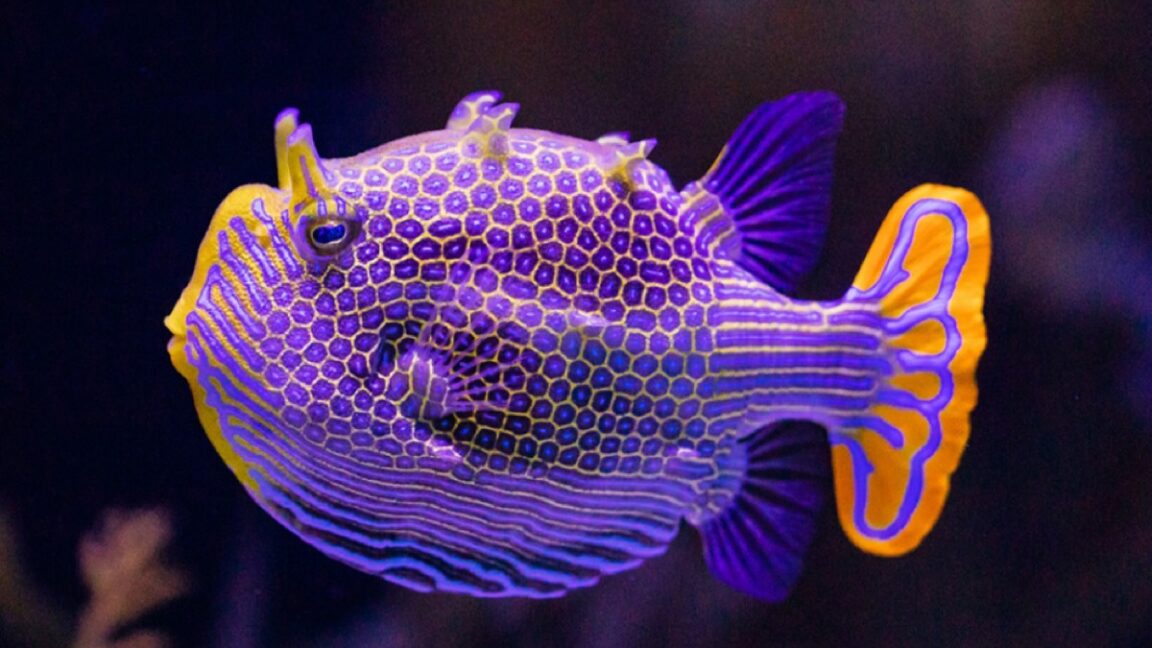Science
New Model Reveals How Imperfections Create Nature’s Patterns

Patterns found in nature, such as the striking black-and-white stripes of zebras and the unique spots on leopards, have intrigued scientists for decades. These formations are known as “Turing patterns,” named after mathematician and computer scientist Alan Turing, who proposed a theoretical framework for their emergence in his seminal paper published in 1952. Recent advancements by researchers at the University of Colorado Boulder (UCB) have introduced a new modeling approach that successfully incorporates imperfections to create more accurate representations of these complex patterns.
Turing’s original hypothesis centered around the interaction of chemicals called morphogens, which serve as activators and inhibitors in biological systems. Activators promote certain characteristics—like the unique stripes of a tiger—while inhibitors limit their expression. This interaction occurs as these chemicals diffuse throughout a system, similar to how gases spread in a container. When an inhibitor moves faster than an activator, it creates a destabilized environment that can lead to the formation of patterns such as spots or stripes.
The application of Turing’s model has been explored across various biological phenomena, including the patterns seen in zebra-fish stripes and the arrangement of hair follicles in mice. For instance, certain Mediterranean ants construct structures from deceased colony members that exhibit Turing patterns. Additionally, a 2021 experiment led by a Spanish research team successfully manipulated E. coli to display branching Turing patterns, showcasing the model’s versatility.
Despite these advances, researchers faced challenges in translating Turing’s simplified model to the complexities of biological systems. The traditional approach often relies on a single length scale for reaction and diffusion, which fails to capture the multi-scale structures and inherent imperfections found in nature. This is where the new UCB research comes into play.
In 2023, UCB biochemical engineers Ankur Gupta and Benjamin Alessio introduced a concept called “diffusiopherosis,” which describes the movement of colloids driven by concentration gradients. By applying this principle, Gupta and Alessio were able to simulate the striking hexagon patterns found on the ornate boxfish, native to Australia, producing outlines that were sharper than those generated by Turing’s original model.
Yet, the initial simulations revealed a significant flaw: the patterns were too uniform, lacking the imperfections characteristic of natural designs. Recognizing this limitation, Gupta and his co-author, Siamak Mirfendereski, refined the model by assigning varying sizes to individual cells. They discovered that larger cells produced thicker outlines, while clustering could create broader patterns or disrupt stripes altogether.
The revised simulations resulted in patterns that closely mirrored those seen in nature. “Imperfections are everywhere in nature,” Gupta remarked. “We proposed a simple idea that can explain how cells assemble to create these variations. We are drawing inspiration from the imperfect beauty of a natural system and hope to harness these imperfections for new kinds of functionality in the future.”
The implications of this research extend beyond understanding natural patterns. Potential applications could include the development of “smart” camouflage fabrics that adapt to their environment or advancements in targeted drug delivery systems, utilizing the principles of Turing patterns for innovative solutions.
The study has been published in the journal Matter, highlighting an important evolution in the understanding of biological pattern formation. The findings not only provide insight into the mechanisms behind the beauty of nature but also pave the way for practical applications in technology and medicine.
-

 World3 months ago
World3 months agoScientists Unearth Ancient Antarctic Ice to Unlock Climate Secrets
-

 Entertainment3 months ago
Entertainment3 months agoTrump and McCormick to Announce $70 Billion Energy Investments
-

 Lifestyle3 months ago
Lifestyle3 months agoTransLink Launches Food Truck Program to Boost Revenue in Vancouver
-

 Science3 months ago
Science3 months agoFour Astronauts Return to Earth After International Space Station Mission
-

 Technology2 months ago
Technology2 months agoApple Notes Enhances Functionality with Markdown Support in macOS 26
-

 Top Stories2 weeks ago
Top Stories2 weeks agoUrgent Update: Fatal Crash on Highway 99 Claims Life of Pitt Meadows Man
-

 Sports3 months ago
Sports3 months agoSearch Underway for Missing Hunter Amid Hokkaido Bear Emergency
-

 Politics3 months ago
Politics3 months agoUkrainian Tennis Star Elina Svitolina Faces Death Threats Online
-

 Technology3 months ago
Technology3 months agoFrosthaven Launches Early Access on July 31, 2025
-

 Politics3 months ago
Politics3 months agoCarney Engages First Nations Leaders at Development Law Summit
-

 Entertainment3 months ago
Entertainment3 months agoCalgary Theatre Troupe Revives Magic at Winnipeg Fringe Festival
-

 Politics2 weeks ago
Politics2 weeks agoShutdown Reflects Democratic Struggles Amid Economic Concerns








